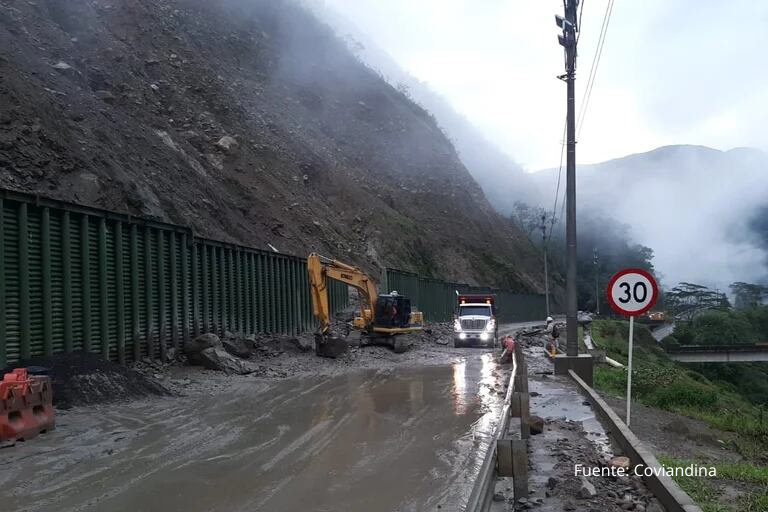
30 Nov 2023
Landslides at km 58 in June and July 2023
By: Andrés Felipe Rey Ladino[1]
On 24 June there was a total closure of the Bogotá-Villavicencio road due to landslides at kilometre 58, which lasted until 30 June. Then, on 17 July, there was an avalanche in the municipality of Quetame (Cundinamarca), which caused the death of 28 people and devastated the village of El Naranjal. The emergency damaged two bridges on the road from Bogotá to Villavicencio, causing the closure of this vital corridor for freight transport. The short-term solution to enable passage after the emergency was the installation of two metal bridges. This total closure took place from 16 to 30 July 2023.
Under normal conditions, the Bogotá-Villavicencio route is 100 km long, with an approximate transit time for freight vehicles of 4 hours.
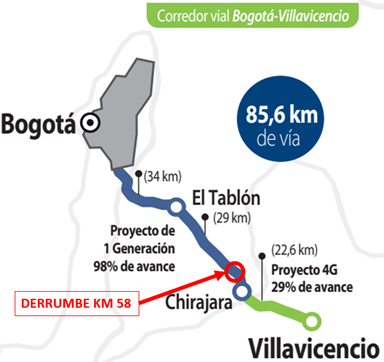
During the emergency, two alternative routes were in operation, the Bogotá-Sisga-Villanueva-Villavicencio route, which was enabled with a weight restriction of up to 30 tonnes and only daytime traffic, with a distance of 353 km and a transit time for trucks of 11 hours. The second alternative route was Bogotá-Tunja-Pajarito-Aguazul-Villanueva-Villavicencio with no weight capacity restriction, on which the trucks travelled a distance of 560 km and a transit time of 15 hours.
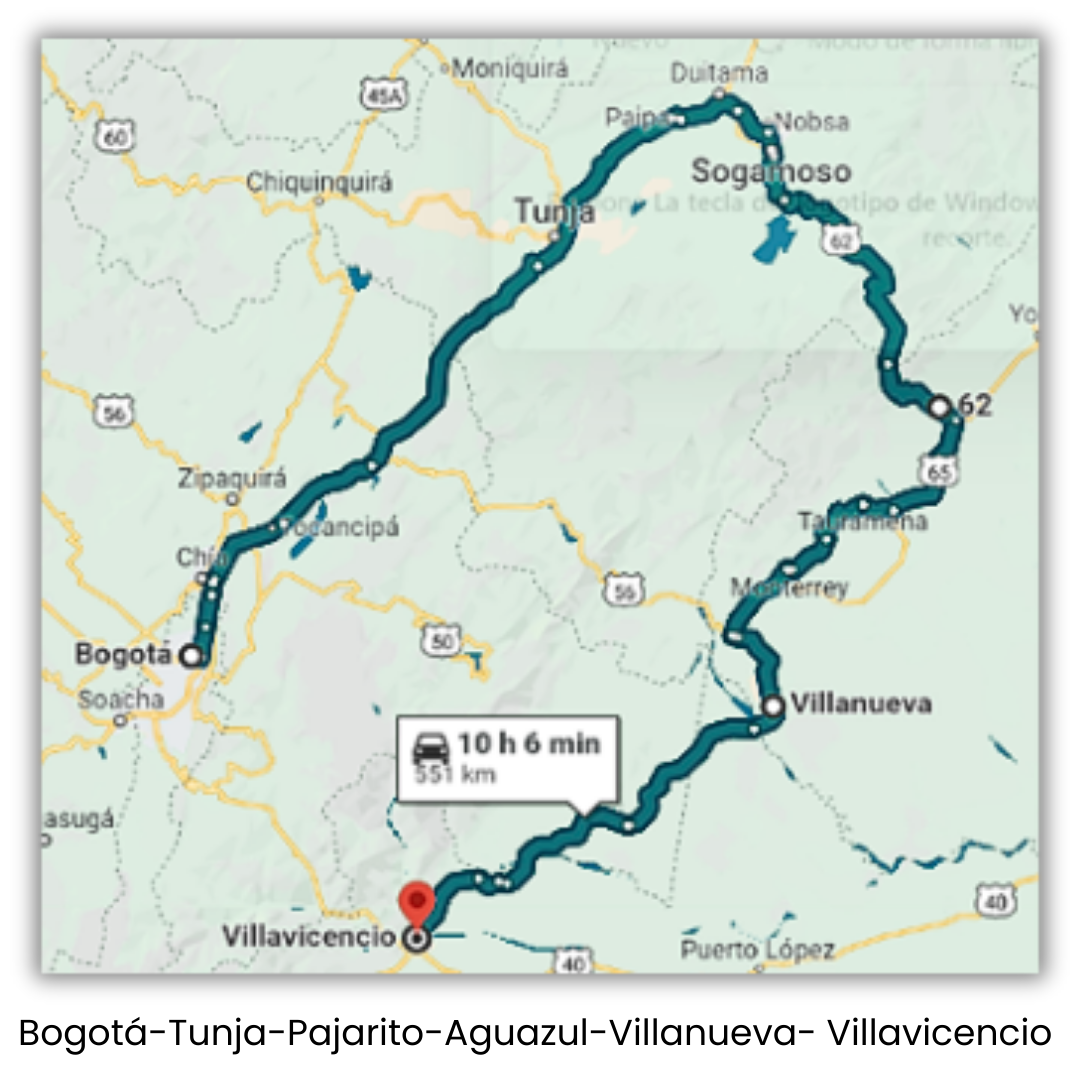

According to the RNDC, Registro Nacional de Despachos de Carga of the Ministry of Transport, between June and July 2023 there was an increase of 37.5% in the cost per trip on the Bogotá-Villavicencio route, with a sample of 3628 trips without counting the transport of liquids.
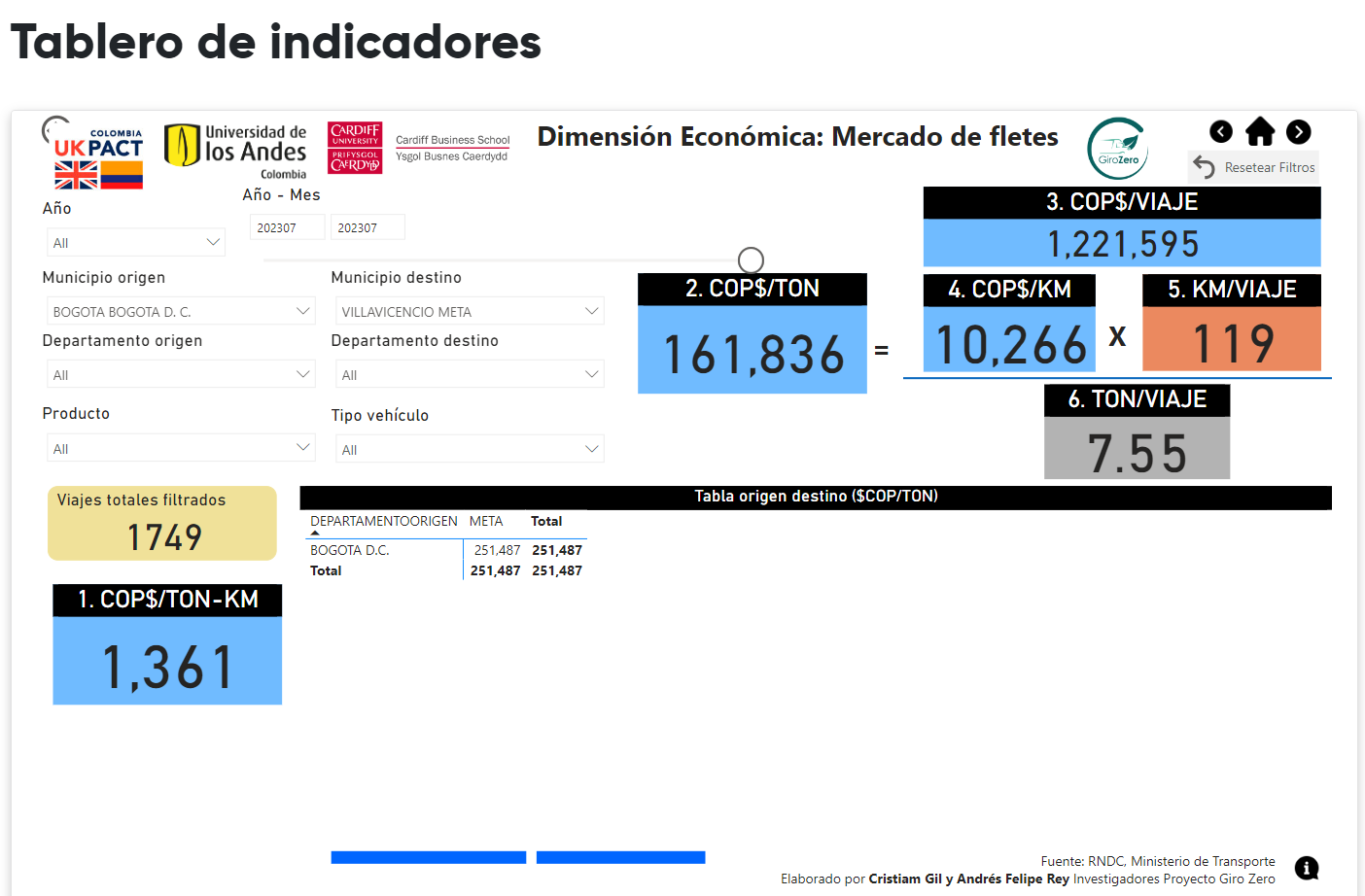
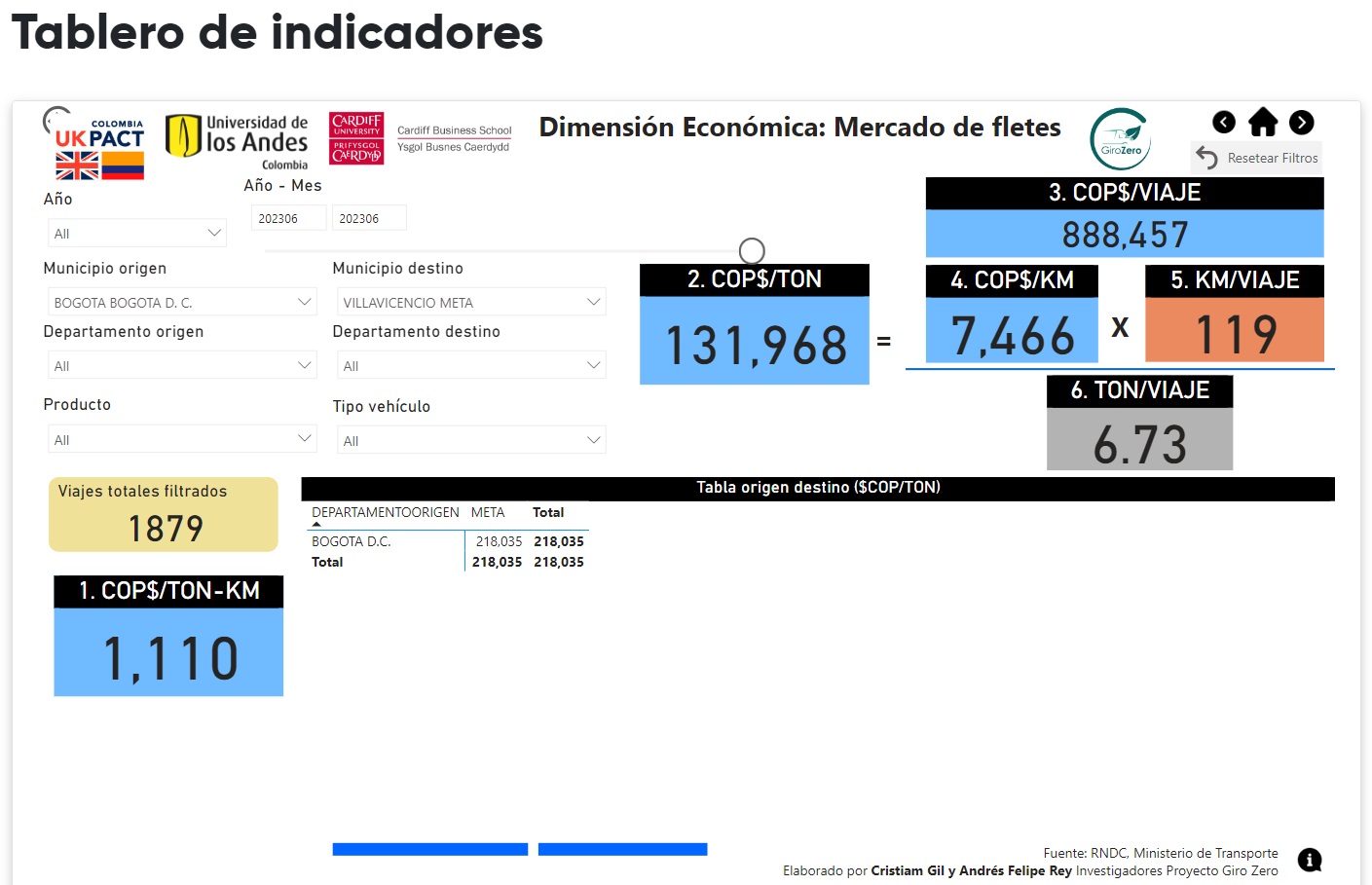
Figure 1. Consultation of the GiroZero[2] dashboard for the months of June and July 2023 on the Bogotá Villavicencio route.
The strongest increase was observed in the segment of double trailers and tractor-trailers with an increase of 53.2% and 46.4%, followed by turbos and singles with an increase of 27.8%, which is congruent with the scheme of alternative routes, which generated a greater route for heavier trucks on the Pajarito Aguazul road, while lighter trucks were able to circulate on the Sisga road.
The impact was cushioned because industry and commerce, which are generators of freight, together with freight transporters, raised the capacity utilisation of each truck by 12.2%, from 6.73 to 7.55 tonnes per trip. As a result, the cost per tonne, which is what consumers ultimately pay, rose by 22.6%.
The following table shows the sample of trips according to each type of truck, where it can be seen that C2 two-axle trucks, Vanes, Turbos and singles represent 88% of the trips and mobilise 66% of the tonnes. While tractor-trailers represent 10% of the trips and manage to move 36% of the load.
According to Fedetranscarga, the estimated economic impacts at the beginning of the emergency were evaluated at 5,000 million[3]. Subsequently, with the information registered in the RNDC of the Ministry of Transport, together with the average number of tons mobilised monthly in this corridor, it is observed that the economic impact amounted to 4,072 million pesos due to the tariff, but was reduced by 1,473 million pesos due to the productivity in higher tons per trip. The final impact was 2,598 million pesos, a figure lower than that estimated by Fedetranscarga, due to the increase in capacity utilisation of freight transport together with the agreements negotiated between transporters, transport companies and freight generators.
This figure, although high and important, is only 11% of the estimated toll collection in a month. For this reason, there is an important call to reinvest the toll resources in resilient roads with a strong focus on climate change adaptation in conjunction with investments in alternative routes to generate robustness in our logistics and transport infrastructure.
Finally, because transport had to be rerouted along the alternative routes, Greenhouse Gas emissions increased by 28%, generating an additional 336 tonnesCO2e for each month affected. This generated an additional cost of 131 million pesos per emissions if offset at international market value[4] for a total economic impact of 2.73 billion pesos.
*The analysis presented only shows the variation of the indicators for the route with origin Bogotá and destination Villavicencio; other origins with destination Villavicencio were not included, nor were other destinations in Meta or the eastern plains. This means that it is assumed that these initial or final sections had no significant variation. However, as the volume reported by the Average Daily Traffic tolls was taken into account, it is considered that the other destinations are considered in the variations of the total figures.
[1] About the author: Andrés Felipe Rey, PhD Candidate from Kuehne Logistics University, Mechanical Engineer from Universidad Nacional de Colombia, Master in Industrial Engineering from Universidad ICESI and GLOBAL SCALE Certification from Massachusetts Institute of Technology (MIT) in Supply Chain Management.
[2] https://girozero.uniandes.edu.co/herramientas/dashboard
[3] https://www.larepublica.co/economia/abren-via-bogota-villavicencio-transportadores-estiman-perdidas-de-5-000-millones-3645613
[4] 86.34 USD for @4539 USD/COP by July 2023 https://es.investing.com/commodities/carbon-emissions-streaming-chart